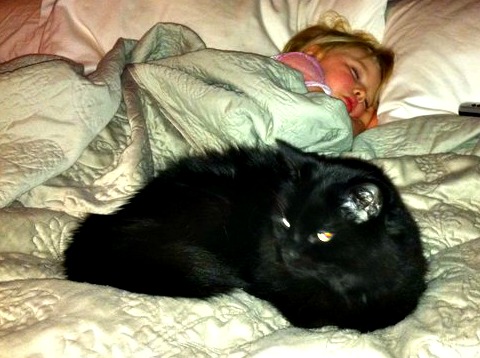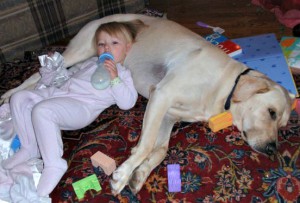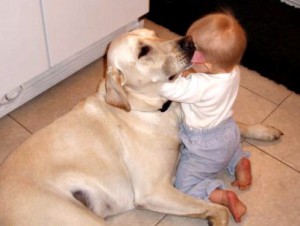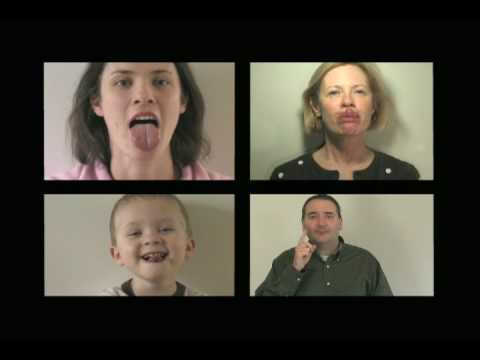For most kids, pets are more than just animals. So when a pet dies, talking to children about death is one of the most difficult things you will do. After all, pets are usually deeply loved members of the family, their best friend, their source of comfort and companionship. Unfortunately, the joy of loving a pet goes hand-in-hand with the heartbreak of losing one.
So what do you do when a pet dies?
Contents
How do you tell the kids? What do you tell them? Talking to children about death isn’t easy. Many parents are afraid of saying the wrong thing. While it’s impossible to shelter your kids from the loss of a pet, you can help them cope with it. And because the loss of a pet might be their first experience with death and dying, this grieving process can help kids learn how to cope with other losses they will inevitably experience throughout life. What you say to your children and how you help them depends on their age, their maturity level, and their life experience.
What you say to a 3yr old will obviously be very different from what you would say to a fifteen-year-old. Before you have this difficult conversation, it’s helpful to understand what your child is capable of understanding about death, developmentally. Infants and very small children do not have a concept of time, so death is just an absence of what was once close to them.
Family Stress Level
They will feel and respond to a pet’s death, based on the reaction of those around him or her. A child picks up on the stress felt by family members, no matter what the cause. Children between the ages of 2 and 4 see death as temporary and reversible and somewhat impersonal. They may believe you can bring a pet back to life by taking it to the doctor for a shot. Cartoon characters come back to life, again and again, reinforcing the idea that death is temporary. Because they don’t understand that death is permanent, many times preschoolers will continue to talk about them as if they hadn’t died, often asking when they’re coming home.
Kids Think It’s Their Fault
Children between the ages of 5 and 8, usually know that death is irreversible but unconsciously believe it only happens to others. They understand the concept but are usually not able to accept that death is happening to them. Between the ages of 9 and 11, children come to understand that death is inevitable, even for them. They know that every living thing dies. They know that they will one day die. This is a time when they may also begin to consider concepts such as eternity, spirituality and heaven. However, children at this age may also feel responsible for the pet’s death, thinking their pet may have died because of something they did or did not do. This is important to understand and should be addressed, to alleviate any false feelings of guilt your child might silently be feeling.
Children 12 and older, although they understand that all living things will eventually die, may not be able to accept it. They are likely to go through the normal stages of grief that grownups do, but without the emotional maturity of most adults.
Stages of Grief
Typical stages of grief are denial, bargaining, anger, guilt, depression and finally acceptance. Death and dying are two of the hardest facts of life to explain to children. As a parent, You are the best person to talk to your children about grief and loss. They love you and trust you. And keep in mind, children are often more open and more resilient than we give them credit for. As you would with any tough issue, try to gauge how much information they need to hear based on their age, maturity level, and life experience, but at all ages, honesty is always the best policy.
In an attempt to ease your child’s pain, it may be tempting to gloss over the event with a lie or explain the death in such a vague way that it leaves your child feeling anxious and confused.
Don’t Confuse Kids
Telling a child that “Bentley ran away” or “Max went on a trip” is not a good idea. It doesn’t take away their pain about losing their pet, and if the truth does come out, your child will become confused and may question their ability to trust you. Also, avoid using the explanation that “Buster went to sleep”. This is also confusing and depending upon the age of your child, it could lead to uneasiness and fear of them going to sleep.
- Begin with the facts and try to communicate them as simply and lovingly as you can.
- Then allow your children to ask questions.
- Recognize that if they ask for details, they’re probably just asking for comfort.
Spare Them the Details

Most importantly, help your child understand that it’s natural to feel all kinds of emotions when you experience a loss. And don’t feel compelled to hide your own sadness about losing a pet.
Show Your Feelings
Showing how you feel and talking about it openly sets an example for your kids. You’re showing them that it’s OK to feel sad when you lose a loved one, to talk about your feelings, and to cry when you feel sad. It’s comforting for them to know that they’re not alone in what they’re feeling.
You can plant a tree in the backyard in honor of the pet, have a special burial ceremony, or put the pet’s ashes and pictures on the fireplace mantle. These kinds of things might be a good way to help your child feel like they have said goodbye. There are also tons of great children’s books that explain death and the grieving process. Just be sure to read them first to make sure that the message is one that you are wanting to convey. Pay close attention to your child’s feelings. Every child is unique and will grieve in his or her own way.
Encourage Discussion
Encourage conversation and set the example of being willing to share what’s going on in your own heart. And perhaps the most important thing you can do is to talk about your pet – often and with lots of love. Let your child know that the pain will eventually go away, but the happy memories of your pet will always be there. When, and if the time is right, you might consider getting a new pet — not as a replacement, but as a way to welcome another member into your family. When a pet dies, talking to children about death in a clear and loving way can be a valuable opportunity to teach an important yet tough life lesson about how to deal with loss in an open and healthy way.
As you talk with your children about all their questions of death, and dying, I hope you will hug them each day as you teach them that every day is a gift. ‘There is a beginning and an ending for everything that is alive. In between is living’ From the children’s book ‘Lifetimes – A beautiful way to explain death to children’




